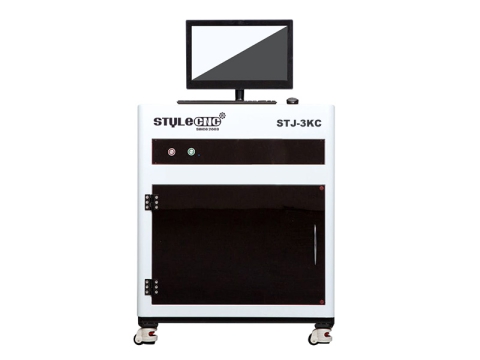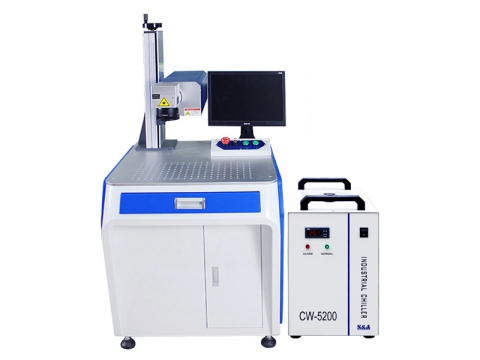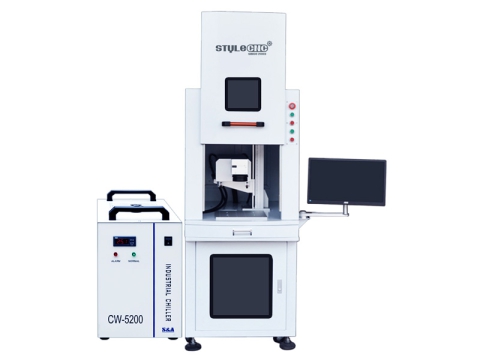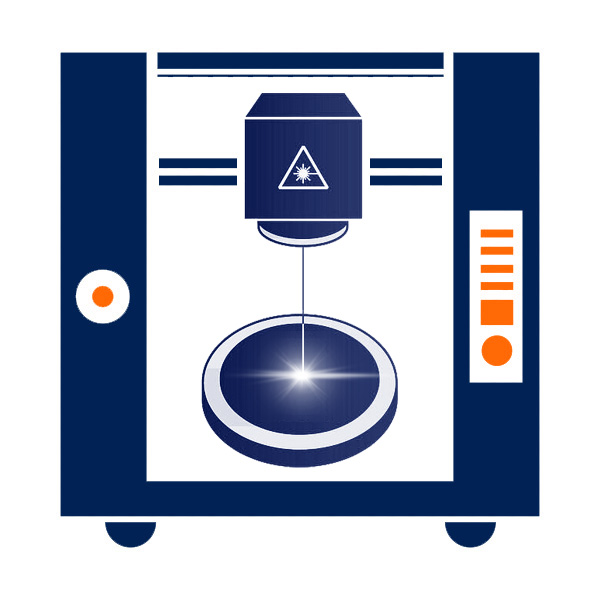Laser marking technology has improved rapidly in recent years. You may have heard that it can create a lot of incredible personalized projects, and considered buying one for yourself. You want to get started on fine engraving with UV laser, there's never been a better time to join the world of laser marking. With the right UV laser engraver, you can mark permanent graphics on plastic, acrylic, glass, crystal, metal, wood and paper. With the STJ-3KC from STYLECNC, you can even etch 3D graphics on the crystal subsurface.
There are a lot of UV laser marking machines on the market today that have varying features, which in turn cater to different needs and budget.
Are you excited about it now? Hold your horses, there are some things you need to understand before buying. This guide will help you decide on which laser engraver should you buy. Let's get started.
Definition
A UV laser engraving machine is a type of laser marking system with 355nm ultraviolet laser wavelength for fine etchings and engravings, due to a high repetition rate, it is especially used for etching plastics (ABS, PA, PE, PP, PS, PC, PLA, PVC, POM, PMMA), silicon, ceramic, glass, wood, metal, and papers. UV laser engraver can reach very high speeds which are indispensable for short cycle times in industrial manufacturing environments. You can also use it to cut leathers. With high peak powers, it can be used for fine marking and structuring with drastically reduced risk of microfracture on ceramics and glass.
Principle
Ultraviolet laser marking machine uses a beam to print permanent marks on the surface of various materials. The effect of marking is to expose the deep material through the evaporation of the surface material, or to "carve" traces through the chemical and physical changes of the surface material caused by light energy, or to burn off the partial material through light energy to show the required etching patterns, text. It is developed by using a 355nm UV laser. Compared with infrared lasers, it adopts three-stage intracavity frequency doubling technology, and has a very small focus spot, which can greatly reduce the mechanical deformation and processing of materials, and the heat influence is small.
Ultraviolet laser marking is a type of cold etching. The process of ultraviolet laser etching is called "photoetching" effect. "Cold engraving" has high-energy (ultraviolet) photons that can break chemical bonds in materials (especially organic materials) or surrounding media. To cause the material to undergo non-thermal process destruction. There is no heating or thermal deformation on the inner layer and nearby areas of the engraved surface.
Applications
Ultraviolet laser marking machine has high performance and ultra-fine features, suitable for high-precision marking of precision electronic components, plastics, leather, and woodworking projects. UV laser etcher is especially suitable for ultra-fine marking the surface of packaging bottles of cosmetics, medicines, food and other polymer materials, with fine effects and clear and firm markings. It is better than ink printing without pollution. It can also be used for high-speed division of glass materials and complex pattern cutting of silicon wafers.
Marking and dicing of flexible PCB boards.
Micro-hole and blind hole processing of silicon wafers.
LCD liquid crystal glass two-dimensional code marking, glassware surface punching, metal surface coating marking, plastic buttons, electronic components, gifts, communication equipment, building materials and more.
Ultraviolet laser etching machine shows extremely high absorptivity when applied to resin and brass, and it also has an appropriate absorptivity when processing glass. Only the expensive excimer laser (wavelength 248nm) can get better overall absorption rate when processing these main materials. This material difference makes UV lasers the best choice for various PCB material applications in many industrial fields, from the production of the most basic circuit boards, circuit wiring, to the production of pocket-sized embedded chips and other advanced processes.
Materials
UV laser engraving machine can provide an excellent beam quality for micro fine marking applications (electronics, microchips and circuit boards) and classical marking applications.
UV laser engravers from STYLECNC are available in different power ranges, which meet customer's different etching requirements.
Ultraviolet laser engravers can be used to mark, etch and engraver a wide range of materials:
Almost all plastics can be engraved with Ultraviolet lasers, including ABS (Acrylonitrile Butadiene Styrene), PA (Nylon), PC (Polycarbonate), PE (Polyethylene), PP (Polypropylene), PS (Polystyrene), PLA (Polylactic Acid), PMMA (Acrylic), POM (Polyoxymethylene & Acetal), and PVC (Polyvinyl Chloride).
Metals can be engraved and marked with Ultraviolet lasers, but it does not have the same effect as a fiber laser. Fiber laser generators can etch deep and clear effects on metal surfaces, while UV laser generators have problems when etching coated metals or reflective metals like copper. Metal materials that can be engraved by Ultraviolet lasers include Titanium, Gold, Silver, Stainless Steel, Chrome, Platinum, Aluminium, and Brass.
Wood materials such as Plywood, MDF, Fibreboard, Walnut, Ash, Oak, Birch, Mahogany, Cherry, Maple, Pine, Larch, Cedar, Spruce, and Fir can also be etched and marked with Ultraviolet lasers.
In addition, it can also mark garments rich in synthetic fibers. Leather, glass, crystal, paperboard, and cardboard are of course no exception.
Technical Parameters
| Brand | STYLECNC |
| Laser Type | Ultraviolet Laser |
| Laser Power | 3W, 5W |
| Laser Wavelength | 355 nm |
| Applications | Plastic, Crystal, Silicon, Ceramic, Glass, Metal, Wood, Leather, Paper |
| Price Range | $5,400.00 - $22,000.00 |
Features & Advantages
UV laser marking is a cold engraving method. Its marking accuracy is high in visible light and infrared band lasers. Under the same conditions, the shorter the wavelength, the smaller the focused spot (the shorter the wavelength, the single photon The greater the energy will be). Visible light and infrared band lasers rely on thermal effects to mark on evaporated materials, but ultraviolet laser can directly break a chemical bond of the material, which is the separation of molecules from the object. The heat-affected area of processing is relatively small, and it can be used for very fine and special materials. Because this marking method has almost no thermal effect, it is also known as cold engraving.
Compared with common laser markers, UV laser marking machine has extremely small spot, which makes the material heated area smaller, less susceptible to thermal deformation, lower power, and more precise marking. It is suitable for ultra-fine marking environment, food and medicine packaging, glass division, electronic components, metal jewelry marking. It can be said that the Ultraviolet laser marking system can mark and code almost all materials, and the marking effect is better than that of other machines. Although its price is a bit expensive, but the practicality is very good.
1. The beam quality is high, the spot is very small, and it can realize ultra-fine marking.
3. Fine marking: The diameter of the laser spot is greatly affected by the wavelength of the light. The UV wavelength (355 nm) is 1/3 of the basic wavelength (1064 nm), so the spot size can be reduced, and marking can also be carried out in a limited space.
3. Galvo-type high-precision marking head, with fine marking effect and repeatable processing.
4. High-precision and meticulous spot to ensure perfect marking results.
5. The marking process is non-contact, and the marking effect is permanent.
6. Ultraviolet laser marking machines have a wide range of applications.
7. The heat-affected area is very small, there will be no thermal effect, and the material will not deform or burn, so it can avoid damage to the processed material.
8. The marking speed is fast and the efficiency is high. It has high average power and high repetition frequency, so the marking speed is faster, which can effectively improve the production efficiency.
9. The whole machine has stable performance, small size and low power consumption.
10. It is more suitable for processing materials with large thermal radiation response.
11. It can cooperate with the production line, automatic loading and unloading, automatic feeding and discharging.
12. It is suitable for marking on most metal and non-metal materials.
Pricing Guide
The most popular UV laser marking machines range from $5,400 to $20,000 in 2025. Most entry-level ultraviolet laser engraver are priced from $5,400 to $7,800 with primary etching features and capabilities for beginners, while professional UV laser etching machines cost more than $12,000, that is much more technologically advanced for ultra-fine engraving.
The price increases with higher power, larger table size and higher marking speed. But there is much more to it than just the purchasing price, such as the fee of customs clearance, tax, and shipping costs. The final costs will depend on your specific needs and place of receipt.
Care & Maintenance
1. Compared with other laser sources, its use environment requirements are stricter.
• The working environment of the machine is cleaned frequently.
• The working environment temperature of the machine should be kept at 16-28°C and humidity 45-75%.
• Do not place it next to equipment that vibrates heavily such as presses and other machine tools.
• The environmental requirement of the processing site is smoke-free.
2. Due to its low power, it is not recommended for customers to mark metal or products with hard materials and marking depth requirements.
3. If water cooling is used for cooling, it is required to use pure water, deionized water or distilled water. Tap water, mineral water and other liquids containing high metal ions or other minerals cannot be used.
4. The equipment should be well grounded and avoid machine vibration as much as possible.
5. Do not use corrosive reagents to clean all parts of the machine.
6. The conveyor belt connecting the cavity and the cabinet is fragile, please do not bend it or be squeezed by heavy objects.
7. Please do not switch the machine on and off frequently, and it can be turned on at least 3 minutes after it is turned off.
8. For machines that use casters and foot cups at the same time, after the machine position is fixed, please use the foot cups to support the machine. This will not only stabilize the machine, but also avoid deformation and damage of the casters caused by long-term pressure.
9. To make the machine dissipate heat smoothly, at the same time, no external heat is allowed to blow directly to the machine.



